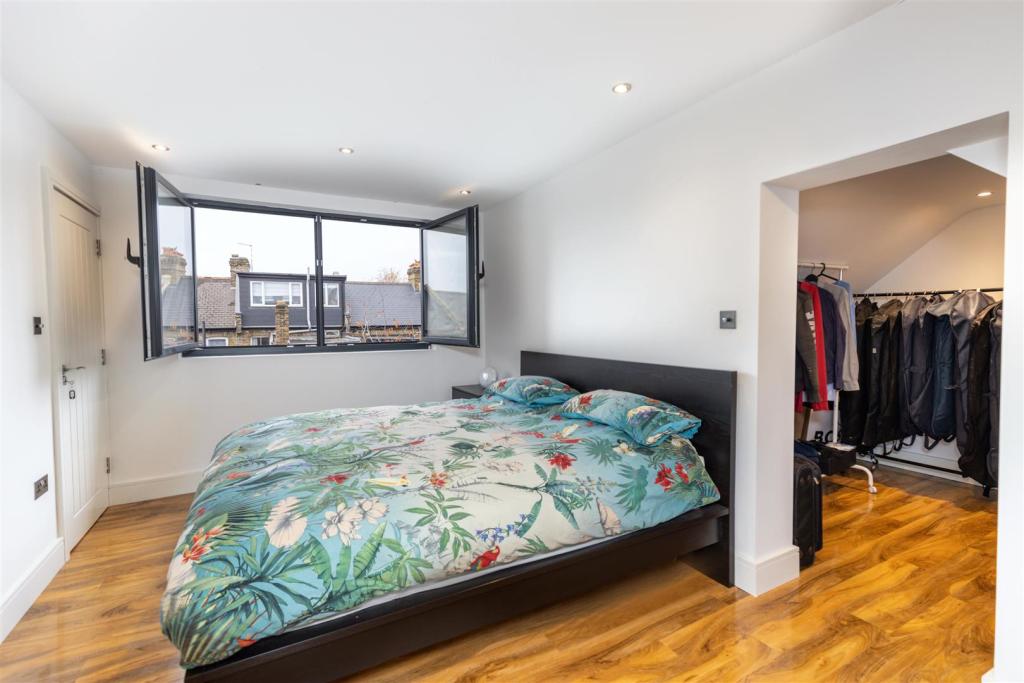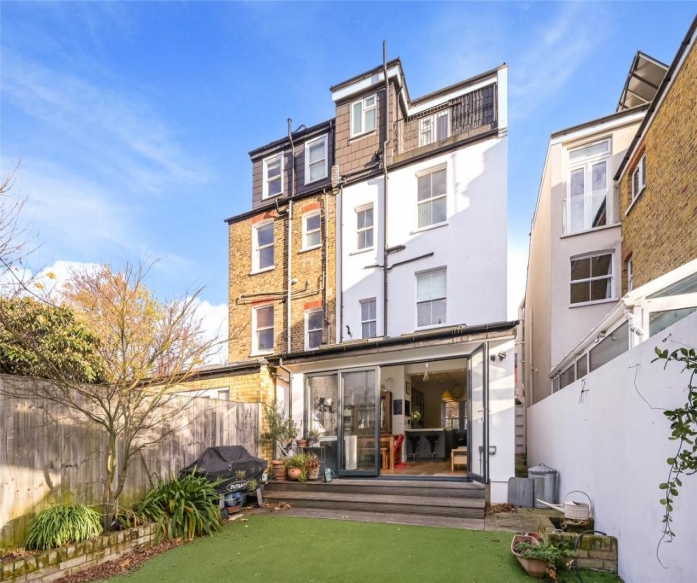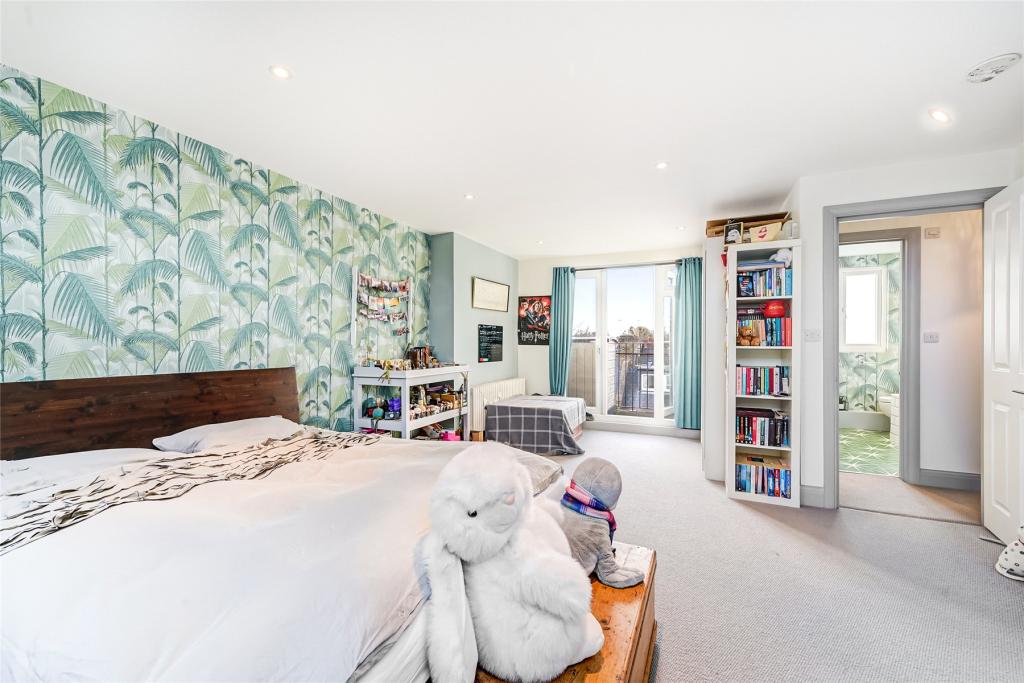Loft Conversion Ealing Articles
Dormer vs. Velux Loft Conversions in Ealing: Which Is Best for Your Home?
July 1, 2025

Shortage of space in your Ealing property? Don’t worry, you have options to extend the space in your attic. Among several options for loft conversions, this article will conduct a comparative discussion between dormer and Velux conversions.
Both dormer and Velux conversion adds space to your property. Without investing too much in buying a new property, a loft conversion helps you utilise the unused space in your attic. Using a simple box-like structure in your attic, you can convert the place into a bedroom or study. Alternatively, using the same structure with slopes, you can create valuable space by installing roof windows.
So, without further ado, let’s start understanding both loft conversion options and see which one is the best for you.
What Is a Dormer Loft Conversion?
It creates an additional space in the attic by installing vertical walls and roofs to make a box-shaped structure out of the slope. It might look like a protruding structure out of your roof, but it adds space to your house, for sure.
After the dormer loft conversion, you can use the space as a big bedroom, study or office for your work. This type of dormer loft conversion is prevalent in properties across Ealing.
What Is a Velux Loft Conversion?
Velux is a popular manufacturer of roof windows. In this type of loft conversion, you can retain the existing roof structure with its slopes and install roof window panels on top of it. A Velux loft conversion is the most cost-effective option to utilise the space in your attic. You can quickly install the roof window panels and make it a valuable space for you.
A Velux loft conversion is the most suitable option for places with planning restrictions.
Planning Permission and Local Regulations in Ealing
When you plan to extend a part of the existing property in Ealing, you might need to apply for planning permission. However, it may not be the case always.
-
Velux Conversion
This type of conversion is likely to fall under the permitted conversion. This is because all you do in Velux loft conversion is to install roof window panels, which helps in making the attic usable as an extension of the property.
-
Dormers Conversion
On the other hand, in this type of conversion, which is front or side facing, you have to apply for a planning permission. The main reason for planning permission for a front facing dormer loft conversion is to ensure the structure is suitable to the existing building structure. To keep the residents and the properties safe where the dormer loft conversion is taking place.
Usable Space and Functionality
Both conversion options come with some benefits and disadvantages related to usable spaces. As there is structural differences in both cases, you will have variation in usable space.
-
Dormer
In this type of conversion, you add a new structure to the existing building. It helps to utilise the attic to its maximum capacity. It is like another room at the top of your existing building. You can use it as a space for a bedroom, bathroom, or office for your business.
The extended headspace makes it more comfortable to move around, and the entire space is open to use as you see fit.
-
Velux
He has only added roof windows to make the attic usable. However, it does not offer the same usability as the dormer loft conversion does. You can use the space for your tranquil retreat in the evening, or a cozy space for reading.
Needless to say, the space may not be fully usable due to its limited headspace. Additionally, the slopes reduce the usability of space near the edges. If you are interested in making this place usable, you might need custom-made storage solutions.
Aesthetic and Light Considerations
Velux offers natural light inside the space, while Dormer, with its protruding structure and wide opening, allows more natural light.
-
Velux
With this type of loft conversion, you can retain the retro look of the building while utilising the attic space. The roof windows allow for natural light and ventilation, making it a habitable space.
With a Velux loft conversion, you get to keep the aesthetics of the building and also allow natural light to enter your attic.
-
Dormer
On the contrary, you get large full-height windows and a wider view of the outside with a dormer loft conversion. It may bring a modern touch to your building, but it might not be suitable for all building types. For example, a dormer loft conversion may not be ideal for an older building. Additionally, it may be challenging to undertake a dormer loft conversion if the building's structure is not robust enough.
Conclusion
A dormer can be a great option for adding more space to your house. However, it can be costly, and you must consider your budget accordingly. On the other hand, a Velux conversion is cost-effective and allows you to keep the retro look of your house.
Ultimately, it depends on your budget, building style and space requirement. Select one loft conversion option based on these factors.
How to Plan for Your Loft Conversion in Ealing
June 24, 2025

Thinking about converting your loft? It’s one of the most innovative ways to add space, value, and character to your Ealing home, but getting it right means planning carefully. Here's a step‑by‑step guide, based on real experience, to help you get started.
Step 1: Define Your Goals
First, ask yourself:
-
Do you want a master bedroom with an en-suite?
-
A quiet workspace, playroom, or guest room?
-
Maybe you're considering a home studio or even a rental space?
Being clear on how you’ll use the loft will guide everything else, budget, layout and design choices—so it’s worth spending some time here before you go any further.
Step 2: Check the Basics
Next, assess the suitability of your loft:
-
How much head height do you have? Most conversions require at least 2.2m at the ridge.
-
Is your roof structurally sound, or will it require additional support, such as steel beams?
-
Do you need planning permission, or can you use permitted development rules?
-
Does your project fall under party wall regulations if you share walls with neighbours?
Having a builder or architect review your plans early means you can identify any potential issues before they become expensive ones.
Step 3: Sketch Out Your Layout
Once you know your loft is suitable, create rough layouts that show where the bed, bathroom, storage, and stairs will be located. Don’t forget to consider window placement and speed of access, as these factors affect how airy and comfortable your space feels.
Staircases deserve particular attention, as they occupy a significant amount of space and need to blend seamlessly with both upstairs and downstairs areas.
Step 4: Plan for Light, Heat, and Wiring
Lighting is a deal‑maker in loft conversions. Options include:
-
Skylights along the roof pitch—simple and often allowed under permitted development.
-
Dormer windows—great for adding headroom and usable wall space.
-
Velux-style windows—easy to operate and blend with your roofline.
Plan where you’ll put light switches, sockets, and heating controls, getting these right early saves re-wiring hassles later.
Step 5: Get the Right Team
You have two main routes:
-
Use your architect and builder: ideal for those who want complete design control. You’ll manage communication, red tape, and timelines yourself.
-
Choose a design‑and‑build service, like Loft Conversion Ealing. We handle everything—planning, drawings, and construction—and guide you every step of the way.
Project managers are invaluable for keeping things moving, managing builders, and liaising with local planners or Building Control.
Step 6: Budgeting and Timelines
Typical timelines range from 6 to 12 weeks, depending on the scope. You’ll need to budget for:
-
The actual build (materials and labour)
-
Professional fees (architects, structural engineers, surveyors)
-
Building control approval
-
Fixtures and finishes — think lighting, flooring, and bathrooms
-
Potential extras—like insulation, soundproofing, or under-eaves storage
Always add a contingency of around 10–15% to your budget for unexpected issues, that way, you’ll be prepared, not surprised.
Step 7: Permits, Materials, and Regulations
Your project will likely require:
-
Planning approval or confirmation of permitted development rights
-
Building regulations approval (for structure, fire safety, wiring, etc.)
-
A party wall agreement, if you're sharing walls with neighbours
Once these are in place, you can select materials such as roof windows, insulation types, and finishes—and schedule the build.
Step 8: The Build Stage
A typical loft conversion build follows this sequence:
-
Scaffolding and site setup
-
Constructing the dormer or roof alterations
-
Installing steel supports or staircases
-
Roofing, lining, and insulation
-
Electrics and plumbing
-
Plastering
-
Fitting floors, bathrooms, and final touches
-
Snagging (inspecting and fixing any minor defects)
-
Final sign‑off with Building Control
Final Thought
A loft conversion in Ealing can add space, value, and charm, but only with good planning. From defining your goals and creating layouts to selecting the right professionals and managing the build, each step is crucial.
If you're at the start of your journey, Loft Conversion Ealing is here to help—from the first free consultation to your new loft’s final finish. No pressure, just honest advice based on years of experience.
Do I Need a Party Wall Agreement for My Loft Conversion?
June 24, 2025

Do I Need a Party Wall Agreement for My Loft Conversion?
If you're planning a loft conversion in Ealing, you might hear talk about a "party wall agreement" and wonder if it applies to your project. It's one of those legal terms that sound complicated, but in reality, it's a key step to help you avoid neighbourly disagreements and stay on the right side of the law.
What is a Party Wall?
A party wall is any wall shared between two homes, common in semi-detached or terraced properties. Even if you have a shared floor or any structure touching your neighbour’s property, that can count as a party structure under the law.
Why It Matters for Loft Conversions
When you're working on a loft, you’ll often be making changes to shared walls—like removing chimney breasts, adding beams, or tying into the structure. Because these works can affect your neighbour’s property or disrupt their home, the Party Wall etc. Act 1996 requires you to deal with it properly
Do You Always Need an Agreement?
Yes — if your loft work touches a shared wall or structure, you must serve a party wall notice at least two months before starting. This gives your neighbour a chance to agree or raise concerns
If they agree in writing, you can proceed without appointing a surveyor. If they don’t respond or don’t agree, your next step is to appoint one or two party wall surveyors who draft a Party Wall Award—a formal document laying out how and when work can happen.
What the Award Covers
A Party Wall Award sets out important terms such as:
-
How the work will be carried out (e.g., using hand tools to avoid vibration)
-
A Schedule of Condition, which documents your neighbour's property before work starts
-
Work times, access arrangements, insurance coverage, and safeguarding neighbour’s property
Typical Costs & Who Pays
You (the homeowner) are responsible for the surveyors' fees, even if your neighbour doesn't speak up. These can range from £900 to £2,700 for single-wall conversions, and up to £5,400 if each party appoints a surveyor.
What Happens If You Don’t Serve Notice?
Failing to provide notice or commencing before the agreement is in place can result in costly problems. Your neighbour could request that you stop work, insist on putting right any damage, or even obtain a legal injunction. So it pays to do this correctly from the outset.
Does This Apply to All Loft Conversions?
If your build is on a detached home without shared walls, the party wall rules typically don’t apply, but if scaffolding or work gets close to a neighbour’s property, it’s still good practice (and often legally required) to issue a notice and keep them informed.
How Loft Conversion Ealing Can Help
Navigating party wall requirements can be one of the most confusing steps in a loft conversion project, but you don’t have to tackle it alone. At Loft Conversion Ealing, we:
-
Review your plans and tell you whether party wall notice is needed
-
Help you serve the notices professionally and on time
-
Coordinate with experienced party wall surveyors to manage the award
-
Take care of ongoing monitoring to make sure your neighbour’s property is cared for
Final Thoughts
A party wall agreement isn’t just red tape—it’s about building with care, following the law, and being good to your neighbours. If your loft conversion touches a shared wall or structure, you’ll need a party wall notice (and possibly an award).
Want a smooth, stress-free build in Ealing? Get in touch with Loft Conversion Ealing today. We’ll help you navigate the legal steps and guide your project from design to handover, without the hassle.